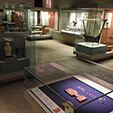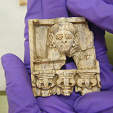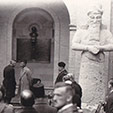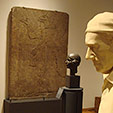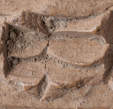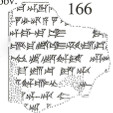Research at the museum
Museums do not only store and display objects from archaeological sites like Nimrud. They are also important centres of research in their own right. These case studies from museums in the UK explore some of the behind-the-scenes investigations being carried out on Nimrud objects in 2013-14. More will be posted during the next phase of the project.
Displaying Nimrud to the public: people and processes
Who are the people involved in creating museum displays, and what processes do they go through to take objects from store rooms to galleries? Dr Paul Collins from the Ashmolean Museum of Art and Archaeology TT in Oxford explains what's involved in bringing Nimrud to the public.
Conserving Birmingham Museum's Nimrud ivories
How do museums care for Assyrian artefacts in their collections? In summer 2013 the Nimrud Project visited Birmingham Museum and Art Gallery to see how they look after their collection of 3000-year-old ivory TT carvings from Nimrud. Conservator TT Alexandra Cantrill gave us a behind-the-scenes look at the conservation TT work that helps to preserve these objects for future generations.
Displaying and redisplaying Nimrud at the Iraq Museum, Baghdad
Artefacts from Nimrud that have remained in Iraq have been displayed in Baghdad PGP since the 1920s. Using rarely seen archival photographs, Dr Lamia al-Gailani Werr of SOAS explores past and current displays in the Iraq Museum TT .
Displaying Nimrud at the Ashmolean Museum, Oxford
What factors must museums consider when creating displays? And how do displays in University Museums differ from those in large national public museums? Curator TT Dr Paul Collins explores past and current approaches to displaying Nimrud material at Oxford University's Ashmolean Museum of Art and Archaeology TT . He explores how the Ashmolean's displays have been shaped by the needs of university teaching, public audiences, and the physical properties of the objects themselves.
Investigating the materiality of inscriptions at the British Museum
Academic study of cuneiform TT inscriptions has traditionally relied on hand-drawn copies TT of the inscribed text. However, valuable information can be gleaned from studying clay tablets TT and other inscribed materials as physical objects in their own right. At the British Museum TT , Assyriologist TT Dr Jon Taylor examines the evidence left behind on the tablets, to reveal the ways in which ancient scribes wrote their texts, and even to identify individual scribes from their handwriting.
Deciphering cuneiform tablets for the GKAB project
It often takes a long time to make full sense of the inscription on a cuneiform tablet. Between 2007 and 2012 a team at the University of Cambridge worked on a research project to edit, interpret and contextualise the tablets from Nabu's temple in Kalhu, along with three other cuneiform "libraries". Here we take one tablet from that findspot TT as a case study, following it from excavation in 1955 to online publication in 2010.
18 Dec 2019